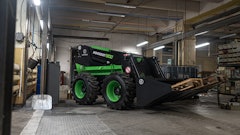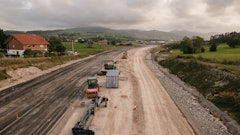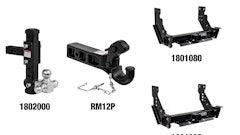
Information from this article was first published in Demolition Magazine and is being reused with permission from the National Demolition Association.
A number of the buildings on the sprawling 61-acre site in the Dayton's Bluff neighborhood on the east side of St. Paul, MN, sat vacant for years, falling into disrepair and blighting the area. The site was once the world headquarters for 3M from 1910 to 1962, before moving to its enormous corporate campus in nearby Maplewood, a St. Paul suburb.
The landscape at Dayton's Bluff began to change dramatically when Rachel Contracting started demolishing a number of buildings on the property formerly owned by 3M. The demolition was the vanguard of a $40 million redevelopment project, the largest such effort in 20 years by the current property owner, the Saint Paul Port Authority (SPPA).
Rachel Contracting was the general contractor for razing 12 of the buildings on the site, as well as providing environmental remediation, earthwork, utilities, asset recovery, landscaping, and other site preparation. A separate SPPA contract awarded to Rachel involved the construction of a street through the property to connect two major roadways. The contract also included a large diameter storm sewer, sanitary sewer and water, a unique storm water retention system, and bituminous hard surfacing.
Now called Beacon Bluff, SPPA's goals for the project included creating 1,400 jobs and generating $2 million in annual property taxes. According to the SPPA, the large redevelopment project was built on the strength of more than 30 public and private partners.
The Tear Down
Rachel, under the direction Don Rachel, current president of the National Demolition Association, commenced the demolition phase of the project by tearing down what's called Building 99 on the northeast corner of the site. Building 99 was a complex of nine, low-profile concrete and metal buildings that were tangent to each other and totaling 207,000 sq. ft.
The next to go was Building 41, a two-story concrete structure that used to be a bank before 3M acquired the property for many of its offices. The triangular-shaped building was on the corner of 7th Street, one of the busiest roadways in St. Paul, which meant working in tight quarters to minimize disruption of ongoing traffic.
The Bigger They Are; The Harder They Fall
One of the more challenging phases of the project was demolishing Building 42, a massive nine-story, 317,000-sq.-ft. behemoth. The structure once housed many of 3M's offices, R&D labs and production areas. Making it even more difficult, Building 42 was connected to Building 21 just a few feet away by two tunnels, a skyway system and common utilities.
Building 21 is a two-story structure that was formerly 3M's corporate headquarters and executive offices, and is now listed on the National Register of Historic Places. This meant safely performing surgical demolition in close quarters by hand and with small equipment to separate the buildings and construct a protective roof and wall system - all before demolition of Building 42 could begin.
Rachel utilized a 125-ton crane and steel wrecking ball to bring the building down. The contractor also used Caterpillar excavators with Genesis attachments for demolition, sorting recyclables and removing debris. Rachel's crew of up to 30 workers also used Cat loaders, a dozer, skid steers, a concrete crushing plant, a mobile screening plant, and a variety of side and end-dump trucks on the jobsite.
"Besides its sheer size and bulk, Building 42 was built to last with enormous reinforced concrete columns on the lower floors and steel I-beams to support the upper floors," said Nick Bartemio, Senior Demolition Project Manager for Rachel. "We used the Genesis attachments to cut through the base of concrete columns before we could knock down sections of the building, and then used it to cut I-beams and other metals on the ground for recycling."
Equally challenging was demolishing Building 2, a five-story, 75,000-sq.-ft. structure that shared a common wall and was attached on every floor with Building 1, which was to remain protected. Every floor had to be separated by hand, Bartemio said.
Tons of More Challenges and Then Some
Other major challenges for the project included coordinating the relocation of a 16-in.-high pressure gas main with Xcel Energy, remediation of 30,000 tons of soils, excavating 44,000 cu. yds. of soil corrections, and screening 25,000 cu. yds. of debris contaminated soil for reutilization on the site.
Rachel's multi-million-dollar contract also included asbestos abatement in all the buildings that were razed, crushing thousands of tons of concrete for reuse in new construction at the site, and importing and placing 52,000 cu. yds. of granular borrow. In addition, their work involved a number of site surface removals and restoration, including new curbs, gutters, sidewalks, excavation for two storm water collection ponds, composting, and seeding the site.



























